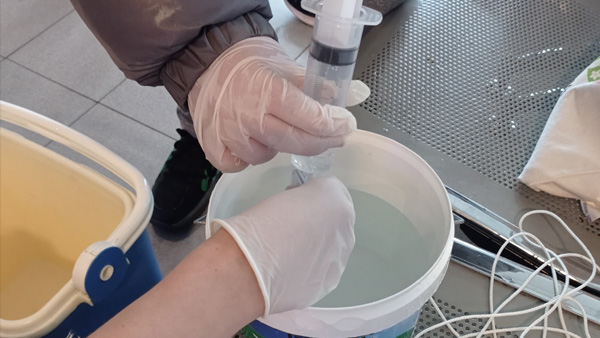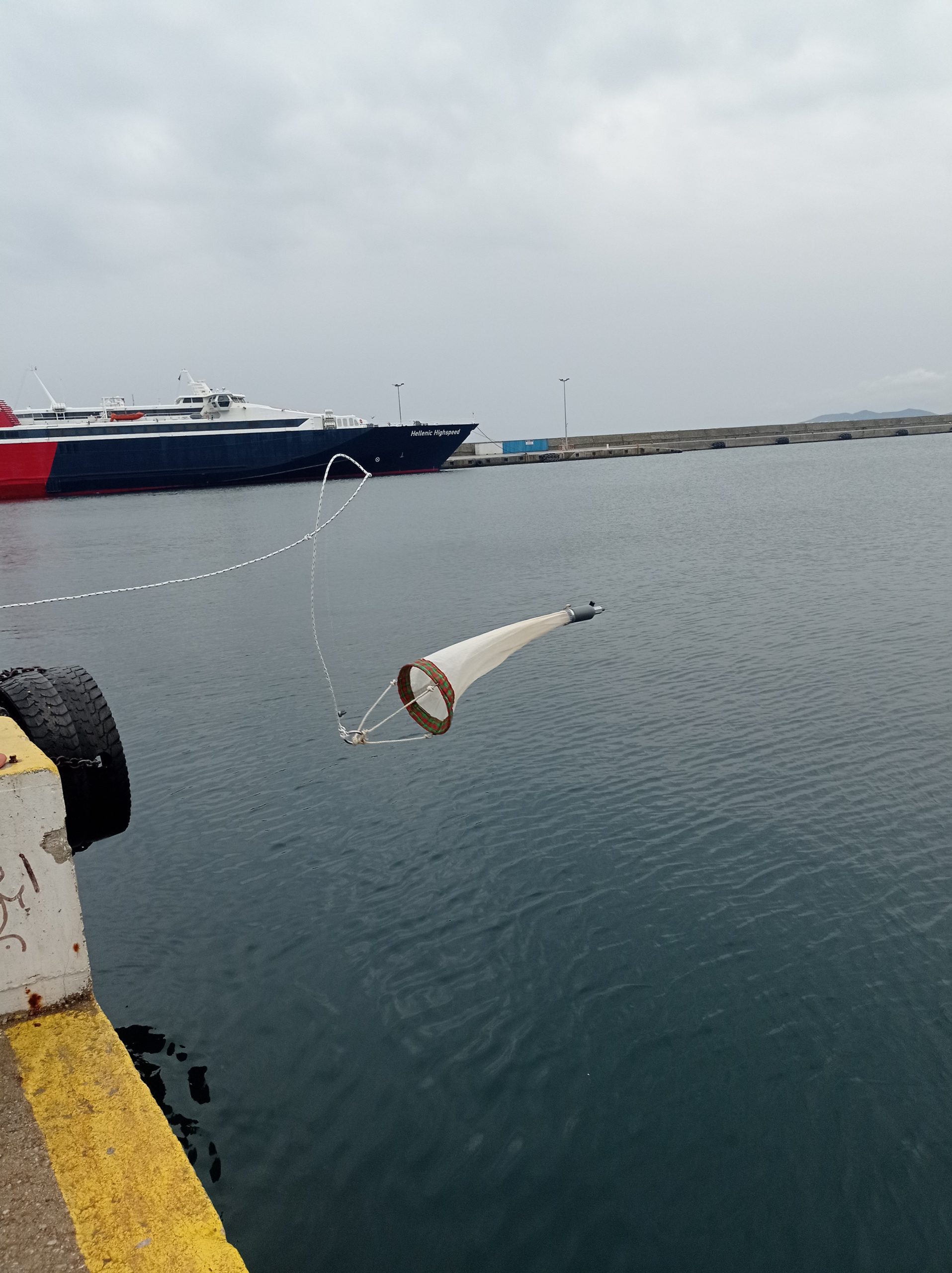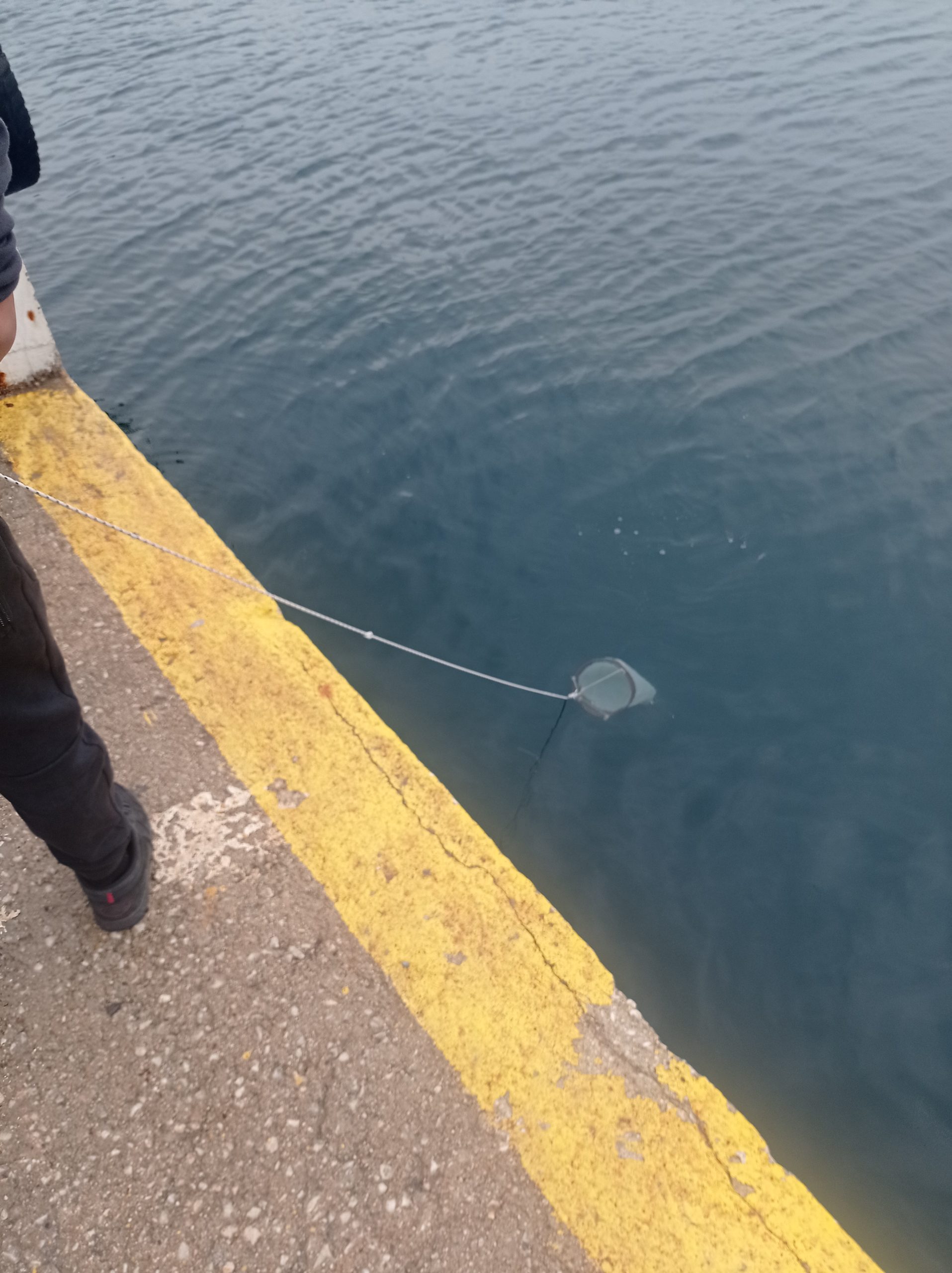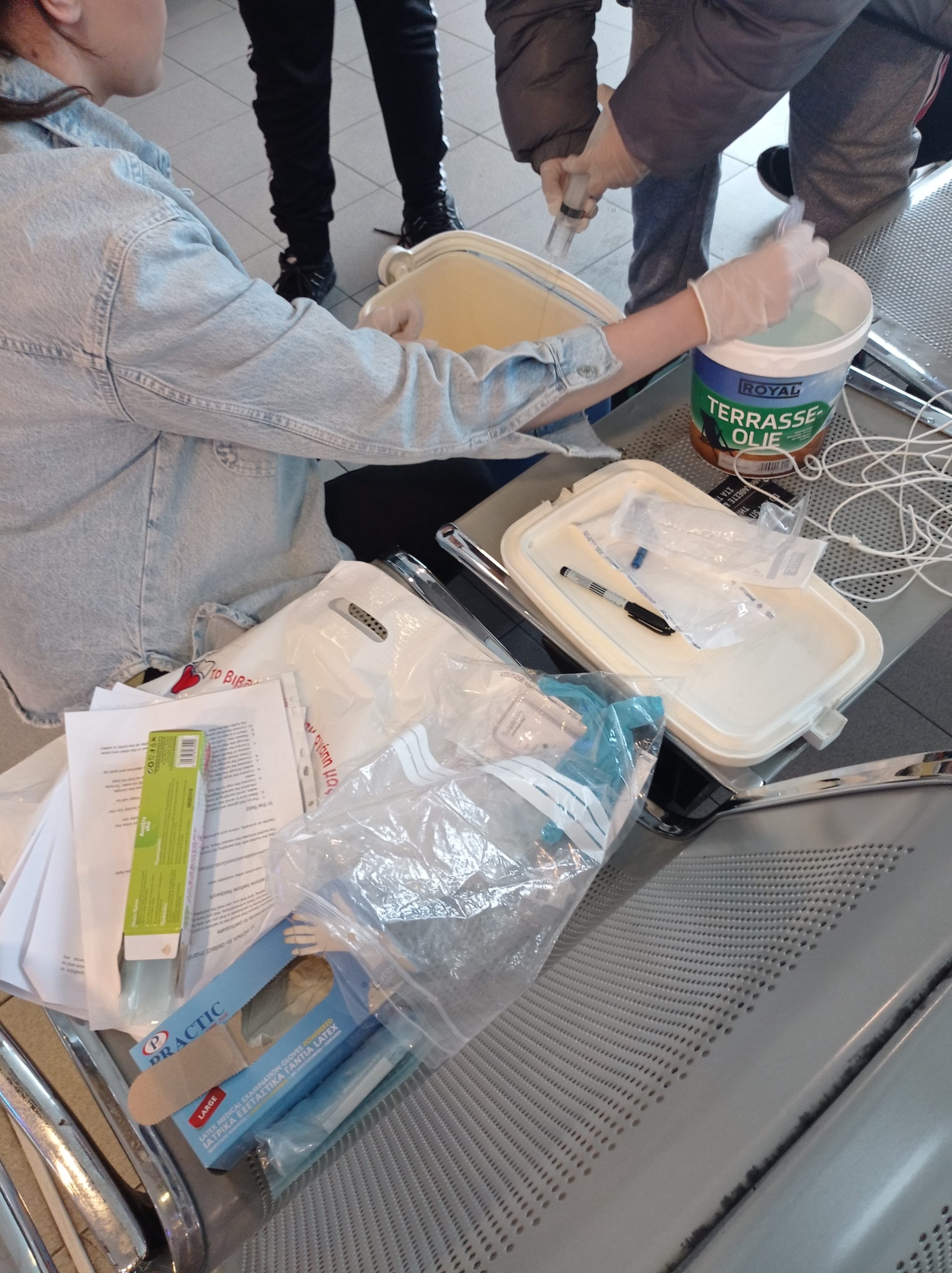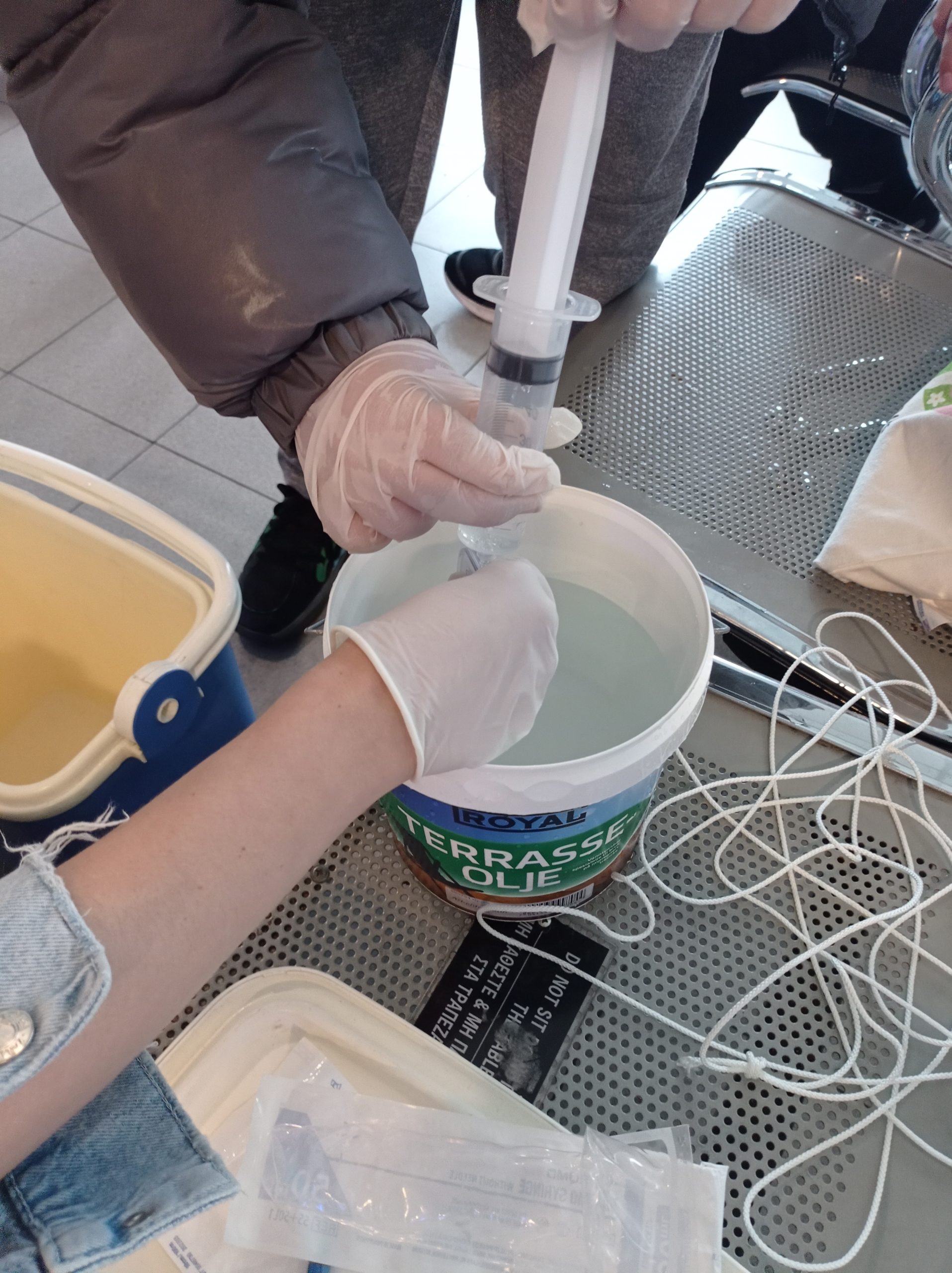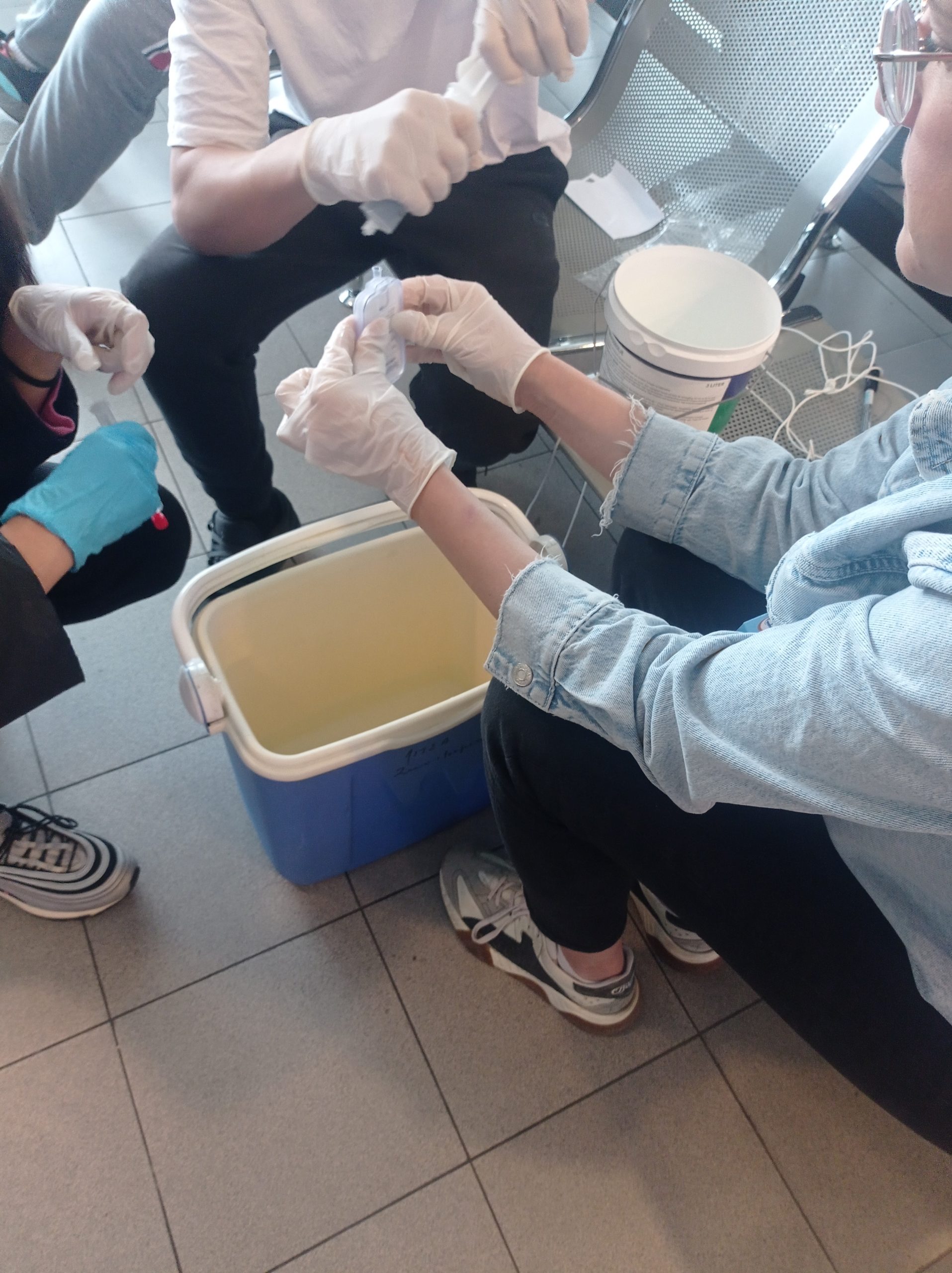e-DNA sampling for non-indigenous species in the port of Kavala
School of Biology of the Aristotle University of Thessaloniki
6th High School of Kavala and Kavala Port Authority S.A.
Greece, 23 April 2024
Last April, the ‘e-DNA sampling for non-indigenous species in the port of Kavala’ event took place in Greece. During this citizen science event, a group of 23 students of the 6th High School of Kavala participated in the water sampling at the Port, and 40 students participated as the audience in the presentation of the BGE project and the theory of the eDNA sampling.
Overview of the event
The event provided participants with a comprehensive exploration of biodiversity and its significance. It began with an introduction to the goals of the BGE project, emphasizing the importance of biodiversity preservation for maintaining ecosystem balance and services (see image below). Students learned that time is running out and biodiversity faces an unprecedented crisis driven by the various aspects of human activities. Addressing this urgent issue requires scaling up and accelerating biodiversity research by collecting as much data as possible across Europe, building solid reference libraries for biodiversity research.
They became aware that their participation as citizen scientists to this initiative is vital. Specifically, they were tasked with filtering sea water in a European harbor, Kavala Port, in Northern Greece, to capture environmental DNA (eDNA) and help detect marine invasive species. Students were supplied with a sampling kit and detailed written instructions along with a video explaining how the sampling is done. Additionally, they collected zooplankton samples utilizing a plankton net, allowing them to gain insight into the vast biodiversity of this community, where non-indigenous species are often encountered. This hands-on experience illustrated why traditional taxonomic identification methods often fail to capture the full range of biodiversity (e.g., due to the small size and morphological similarities of many species). Finally, they participated in a DNA game, which allowed them to understand in a simple way the principles of DNA barcoding.
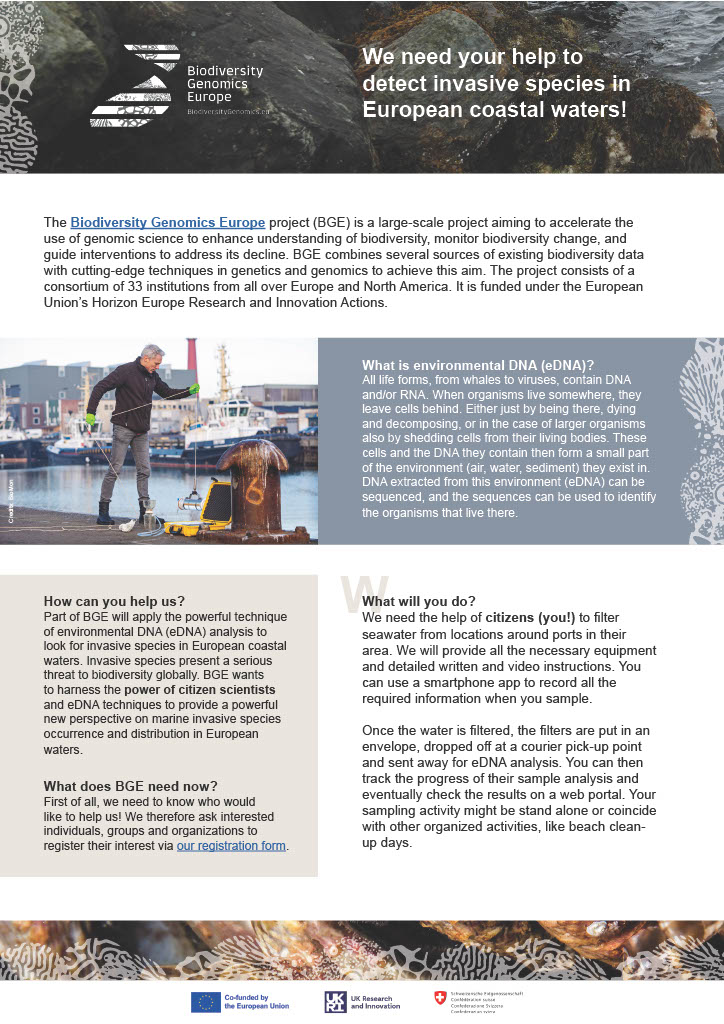
The leaflet of the citizen science- eDNA action that was given to the participants. Source: BGE
Goals
- Introduction to the up-to-date situation regarding the global biodiversity crisis: Participants were briefly informed how and why the classical identification methods, despite their utility and importance, are often inadequate or unable to tackle the ever-increasing biodiversity loss and how the DNA tools can help us toward this direction.
- Highlighting the importance of biodiversity research and the BGE Project Goals: Participants were introduced to the overarching goals of the BGE project, which aims to address the pressing issue of biodiversity loss.
- Highlighting the role of non-indigenous species to the biodiversity crisis: Attendees gained insights into why the spread of non-indigenous species to new areas far from their original distribution range is recognized as one of the major anthropogenic impacts that threaten ecosystems at the level of biodiversity and function. Typical examples of marine non-indigenous species recorded in Greek seas were also presented.
- Presentation of the e-DNA sampling procedure: Participants were informed of the procedure regarding the e-DNA sampling in the field (e.g., familiarization with the sampling kit/equipment, precautionary measures to avoid possible contamination).
- Technical Aspects regarding Biodiversity Research: Participants were introduced to the technical aspects of biodiversity research, including the importance of accurate metadata collection during citizen science activities.
- Presentation of the classic sampling procedure for marine zooplankton (e.g., type of nets used, samples fixation, species identification).
Content
09.00 Arrival at the venue location (6th High School of Kavala). Round ofintroductions.
09.15 Venue introduction & the big picture. Participants are introduced to the goals of the BGE project and why the preservation of biodiversity is important. The importance of biodiversity preservation was emphasized, highlighting its crucial role in maintaining ecosystem balance, supporting ecosystem services, and safeguarding global health and well-being.
09.45 Introduction to non-indigenous species.
10.15 Boarding on a bus and departure for the port of Kavala.
10.30 e-DNA sampling in the port of Kavala.
11.30 Zooplankton sampling by the classical methodology (by horizontial and vertical tows of a plankton net).
11.45 Boarding on a bus and returning to school.
12.00 Round of discussions regarding e-DNA sampling.
12:30 Break and light brunch.
13:00 Observation of collected zooplankton samples under a microscope provided participants with valuable hands-on experience in zooplankton research.
13:30 DNA game. We played a simple DNA game in which participants had to manually reconstruct the DNA barcode sequence and then identify the corresponding organism from a reference library. The purpose of the game was to provide a simple and playful introduction to the principles of DNA barcoding.
Feedback summary
Students showed great interest in the process, which was a first-time experience for them. They were engaged in fascinating discussions, but most importantly, they realized the invaluable help of citizens to help us build the map of European biodiversity.
Images by the School of Biology of the Aristotle University of Thessaloniki

